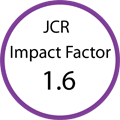Risk Factors and Outcomes of Acute Kidney Injury After Cardiac Surgery: A Retrospective Observational Single-Center Study
Abstract
Background: Acute kidney injury (AKI) following cardiac surgery is a well-described phenomenon, usually associated with hemodynamic changes ultimately leading to ischemic injury to the kidneys. In this study, we assessed the occurrence of AKI in a cohort of patients undergoing elective cardiac surgery at a single center.
Methods: Patients undergoing elective cardiac surgery (coronary artery bypass grafting (CABG) and/or valve repair) between the years 2016 and 2022 were retrospectively included in the study.
Results: During the study, 167 patients underwent CABG, valve replacement, or both procedures. The majority were male (85.0%). Post-operative AKI was observed in 27.5% of patients, with 2.4% requiring continuous renal replacement therapy (CRRT)/dialysis. The majority of AKI cases were staged as Kidney Disease: Improving Global Outcomes (KDIGO) stage 1. Among patients needing CRRT/dialysis, 1.8% recovered renal function within 3 months, with 0.6% experiencing 30-day mortality. In univariate analysis, factors associated with AKI included older age (P = 0.003), severe anemia (P < 0.0001), pre-operative creatinine elevation (P < 0.0001), complex surgeries (P < 0.0001), blood product transfusion (P < 0.0001), longer cross-clamp (XC) and cardiopulmonary bypass (CPB) times (P < 0.0001), and inotropes usage (P < 0.0001). Classical risk factors like diabetes mellitus (DM) and hypertension did not show significant differences. The majority of these factors (severe anemia, age, pre-operative creatinine, post-operative inotrope usage, and cross-clamp times) were consistently significant (P < 0.05) in logistic regression analysis.
Conclusion: Post-operative AKI following cardiac surgery is frequent, with significant associations seen especially with pre-operative anemia. Future investigations focusing on the specific causes of anemia linked to AKI development are essential, considering the high prevalence of hemoglobinopathy traits in our population.
J Clin Med Res. 2024;000(000):000-000
doi: https://doi.org/10.14740/jocmr5220










